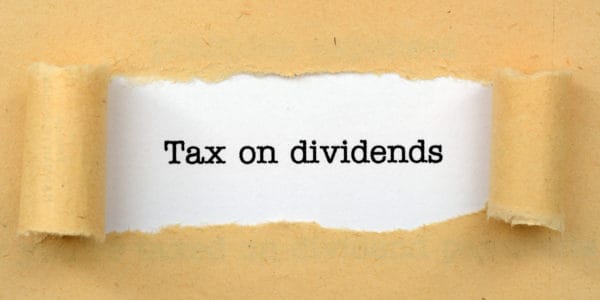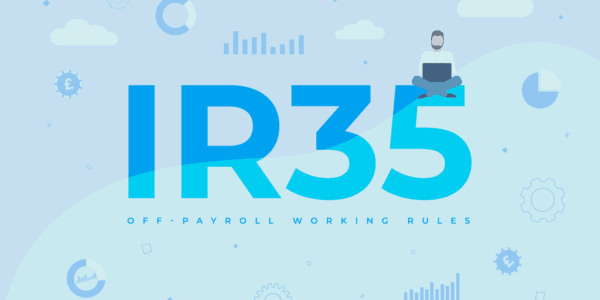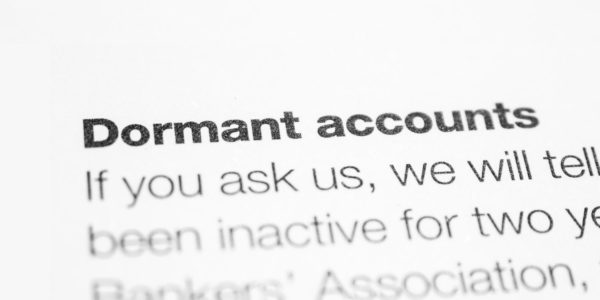All limited companies registered in the UK have a legal obligation to prepare annual accounts every year. Depending on the size of your company and the complexity of its financial activity, you may be able to take care of all bookkeeping and accounting duties yourself. Most companies, however, hire accountants.
Whatever you decide, it is important to fully understand your company’s accounting obligations. This ensures that your business is compliant and that you’re fulfilling your director’s duties and responsibilities.
What are annual accounts?
Annual accounts are often referred to as ’financial accounts’, ‘statutory accounts’, or ‘company accounts’. Providing a summary of an organisation’s financial activity over a set period of time (usually 12 months), annual accounts are made up of financial statements and records that contain comprehensive information about a company’s transactions, operating performance, and financial position at the end of its financial year.
Limited companies must deliver their annual accounts to:
- Companies House
- HM Revenue & Customs (HMRC) as part of their Company Tax Return
- company shareholders or guarantors (‘members’)
- every holder of the company’s debentures
- anyone who is entitled to attend general meetings
The financial data required to prepare accounts comprises income, expenses, assets, liabilities, and equity. Full annual accounts, which all active companies must prepare for members and HMRC, should generally include:
- a balance sheet
- a profit and loss account
- supporting notes about the accounts
- a director’s report
- an auditor’s report (unless the company is exempt from audit)
However, small companies and micro entities are not usually required to prepare full accounts for Companies House. Instead, they may be permitted to file simpler accounts.
Dormant companies do not need to prepare any accounts for HMRC until they start trading. Whilst dormant, they need only prepare dormant accounts for Companies House.
1. The Balance Sheet
The balance sheet is a financial statement that provides a snapshot of assets, liabilities, and shareholders’ equity at the end of a company’s financial year. This shows how much the business owns, owes, and is owed, which gives an indication of the value and financial health of the company at the time of preparing the accounts.
Assets are things of value that the company owns, including land, buildings, vehicles, plant, machinery, IT equipment, furniture, materials, stock, petty cash, money in the bank, and accounts receivables (money owed to the company by customers).
Liabilities are obligations and money owed by the company, including mortgages, loans, accounts payable, tax obligations, pension payments, accrued payroll and expenses, dividends payable, customer deposits, and any other short-term (‘current’) and long-term liabilities.
The balance sheet is a good indicator of a company’s value, liquidity, borrowing commitments, and financial stability. If the company’s assets are greater than its liabilities, that usually indicates that the business is doing well. Conversely, if the company’s liabilities exceed its assets, the business owes more than it owns, which is not good news.
2. The Profit and Loss Statement
The Profit and Loss Statement includes all transactions that took place over a set period (usually 12 months), showing whether the company made a profit or loss during that time. It will include the company’s turnover (income) minus the cost of sales and all other business expenses, including mortgages or rent, utilities, loan repayments and interest, wages, pensions, and Corporation Tax and VAT.
At the end of this statement, the remaining figure will show how much profit or loss a company has made over the financial year. If the company has made a profit, dividends can be issued to shareholders. Any retained profit remaining after the payment of dividends can then be reinvested in the business.
3. Notes to the accounts
Notes to the accounts simply refers to any supplementary information provided to support the accounts. Some notes are required by law or are a stipulation of the accounting principles being followed, whilst other notes may help to understand the company’s current financial position, clarify specific entries in the balance sheet or profit & loss account, or support future performance estimates.
4. The Directors’ Report
Prepared by a company’s board of directors, a directors’ report is a financial document that larger companies must include in their annual accounts. Small companies and micro-entities are normally exempt from this requirement.
The purpose of a directors’ report is to summarise and contextualise the performance and current financial position of the company, as well as future prospects and proposed strategies. This information helps company members and other users of the accounting information to better understand the overall financial health and viability of the business.
Generally, a directors’ report will include some or all of the following:
- Names of all persons who were directors of the company during the financial year reported in the accounts
- Analysis of the company’s performance within its market
- Summary of the company’s current financial position
- Description of the company’s principal business activities, objectives, and strategy
- Current state and future viability of the market in which the company operates
- Summary of likely future prospects and developments
- Any trends or factors that are likely to affect the company’s future performance, development, or financial position
- The company’s capacity for expansion and growth
- Description of principal risks and uncertainties that the business is facing
- Explanation of the way in which the directors have assessed the company’s prospects, risks, and uncertainties
- Explanation of how these opportunities and challenges are being managed
- Any important financial events affecting the company that occurred after the date on the balance sheet
- Significant changes to fixed assets belonging to the company
- Recommendations for dividend payments
- Whether the business and its directors are complying with all necessary regulations, standards, and responsibilities
Providing greater corporate transparency, the directors’ report is a valuable resource that enables company members to make informed decisions, assess the performance of the directors, and ensure that the business is being managed responsibly.
5. An Auditor’s Report
Carried out by an external qualified auditor or chartered accountant, an auditor’s report is a document that provides an independent evaluation and clear expression of opinion on the ‘truth and fairness’ of a company’s annual accounts. Generally, an auditor’s report should state:
- The responsibilities of the auditor and company directors
- That a set of standard accounting practices was the guide
- Whether the accounts have been properly prepared in accordance with UK Generally Accepted Accounting Practice (GAAP) and the requirements of the Companies Act 2006.
- Whether the financial statements give a true and fair view of the company’s assets, liabilities, and financial position
- Any additional comments or information
Private limited companies must include an auditor’s report in their annual accounts unless they are ‘small’ and qualify for audit exemption. Even if a private limited company meets the criteria for audit exemption, the annual accounts must still be audited if shareholders who own at least 10% of the company’s shares request an audit, or if the company’s articles of association state that the accounts must be audited.
Small company, micro-entity, and dormant company accounts
Small companies and micro-entities (very small companies) can usually prepare simpler accounts for Companies House. This means that less financial information is disclosed on the public register. Full statutory accounts must still be sent to company members and delivered to HMRC as part of the Company Tax Return.
Small company abridged accounts
To qualify as ‘small’, a company must satisfy any two of the following conditions:
- annual turnover does not exceed £10.2 million
- the balance sheet total does not exceed £5.1 million
- the average number of employees does not exceed 50
Small companies can prepare ‘abridged’ accounts, which contain:
- a simplified balance sheet
- a simplified profit and loss account (not required at Companies House)
- a statement on the balance confirming that the members have agreed to the preparation of abridged accounts for the accounting period covered in the accounts
- notes to the accounts
- directors’ report (not required at Companies House)
- an auditor’s report (unless the company claims exemption)
Abridged accounts can only be prepared upon the authorisation of company members. Small companies are not required to send a copy of the profit and loss account or the directors’ report to Companies House – these need only be provided to members. If a company chooses not to send a copy of the profit and loss account, this must be stated on the balance sheet
Micro-entity accounts
To qualify as a micro-entity, a company must satisfy any two of the following conditions:
- annual turnover does not exceed £632,000
- balance sheet total does not exceed £316,000
- average number of employees is not more than 10
Micro-entity accounts contain:
- a simplified balance sheet
- a simplified profit & loss account (not required at Companies House)
- notes to the accounts
- a directors’ report (not required at Companies House)
- an auditor’s report (unless the company claims exemption)
Micro-entities do not have to deliver the profit and loss account or directors’ report to Companies House, but these should be sent to members.
Dormant company accounts
Dormant companies are those which are not trading and no not receive any income. In such instances, dormant company accounts should be delivered to Companies House, but there is no requirement to send accounts to HMRC.
Dormant companies can prepare abridged or simpler accounts. There is no need to include a profit & loss account or directors’ report, nor is there usually any requirement to provide an auditor’s report.
How to file your annual accounts
Annual accounts can be delivered online. They must be filed after the end of your company’s financial year, which is a 12-month period that ends on the ‘accounting reference date’ (ARD). You will initially get different deadlines for sending your first annual accounts to Companies House and HMRC. It is possible (and beneficial), however, to file subsequent accounts at the same time.
Sending annual accounts to Companies House
Your first annual accounts should be delivered to Companies House no later than 21 months after the date of company formation. The period covered in your first accounts will probably be longer than 12 months because your first financial year will:
- start on the day that your company was registered at Companies House
- end on your company’s ARD, which will be the last day of the month in which your company was registered
Example:
- Your company was incorporated at Companies House on 10th January 2024 – this is the start of your company’s financial year
- Your accounting reference date is 31st January 2025 – this is the end of your company’s financial year
- Your first annual accounts should be filed at Companies House by midnight on 1st October 2025 (21 months after the date of incorporation)
After your company’s first year, the deadline for delivering annual accounts to Companies House is 9 months after the accounting reference date.
Example:
- Your company’s ARD is 31st January
- Your accounts should be filed at Companies House by midnight on 1st October the same year (exactly 9 months after the ARD)
Sending annual accounts to HMRC
Annual accounts should be delivered to HMRC as part of your Company Tax Return no later than 12 months after the end of your ‘accounting period’ for Corporation Tax. This accounting period must not be longer than 12 months.
Normally, the accounting period for Corporation Tax will correspond with the financial year covered in your annual accounts, but it may be different during the first year. As a result, you might have to file two tax returns to cover the longer period in your company’s first annual account – one tax return for the first 12 months, and another tax return for the extra time covered in your first annual accounts.
Example:
- Your company was incorporated on 10th January 2024 and started trading immediately
- Your first accounting period for Corporation Tax will end exactly 12 months later, on 9th January 2025
- The accounting reference date for annual accounts is 31st January 2025
- Therefore, the second accounting period for Corporation Tax will run from 10th January 2025 and end on 31st January 2025
You will prepare your first annual accounts for 10th January 2024 to 31st January 2025. Then you will file both of the following:
- a first Company Tax Return for the period 10th January 2024 to 9th January 2025
- a second second Company Tax Return for the additional period of 10th January 2025 to 31st January 2025
After this first year, your annual accounts and Company Tax Returns will normally cover your company’s 12-month financial year. Based on the example above, this will start on 1st February and end on 31st January (your ARD) the following year.
Your deadlines for sending annual accounts to HMRC may be different if your company is dormant for a period of time and/or you do not start trading on the date of incorporation.
Accounting records that your company must keep
To be able to complete your company’s annual accounts and tax returns, you will have to keep financial and accounting records, information, and calculations that include:
- all income received by the business
- all money spent by the business
- details of all goods and services bought and sold by the business
- details of everything that the company owns (assets) and owes (liabilities)
- details of any money owed to the company
- mortgages and loan agreements
- lease agreements
- bank statements
You are legally required to keep all accounting records for a minimum of 6 years (sometimes longer) from the end of the financial year to which they relate. HMRC may check your accounting records to ensure that you are providing accurate information, paying the right amount of tax, and keeping proper records.
[amazonbusiness]
Please note that the information provided in this article is for general informational purposes only and does not constitute legal, tax, or professional advice. While our aim is that the content is accurate and up to date, it should not be relied upon as a substitute for tailored advice from qualified professionals. We strongly recommend that you seek independent legal and tax advice specific to your circumstances before acting on any information contained in this article. We accept no responsibility or liability for any loss or damage that may result from your reliance on the information provided in this article. Use of the information contained in this article is entirely at your own risk.






Join The Discussion
Comments (2)
Thanks for the article! These annual accounts preparation tips will be useful for my own accounting solutions UK business.
Thank you for your comment, David.
Kind regards,
The QCF Team